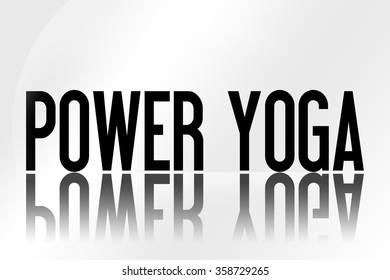Power yoga emphasizes flexibility and strength, just like regular yoga. This form is more robust compared to traditional yoga. Power yoga has evolved from ashtanga yoga.
Let’s check out the fundamental difference between ashtanga yoga and power yoga.
Ashtanga Yoga
It is a rigid and schematic kind of exercise. The postures practised in ashtanga yoga is spontaneous and linked to each other. This form of exercise creates more internal heat and enhances the cardiovascular health of an individual.
Power Yoga
Power yoga is yoga in the form of exercise. It is more exercise-centric, and it focuses more on endurance and stamina. In power yoga, a series of postures are practised, but in no specific sequence. This form of yoga allows experimentation in the line of posture.

Different asanas taught in power yoga classes & their benefits;
Utkatasana (Chair Pose)
For this, you take a posture which is like sitting on a make-believe chair. It is recommended to hold this posture for 30 seconds to 60 seconds.
Benefits of Utkatasana (chair pose)
-
Tones knee muscles.
Strengthens ankles
Strengthens calves
Strengthens hip flexors
This posture stretches the chest.
Stimulates heart
Adho Mukha Svanasana (Downward Facing Dog Pose)
This is an inversion asana. As the name suggests, the posture is similar to the way the dog stretches. Practitioners should hold this position for 1 minute to 3 minutes.
Benefits of Adho Mukha Svanasana ( Downward-Facing Dog Pose )
-
This posture energizes the body.
Helps in rejuvenating
Relieves mild depression
Strengthens bones
It helps in preventing osteoporosis.
Increases lung capacity
Chaturanga Dandasana (Plank Pose)
This asana is very much similar to plank. This posture is dependent on four limbs. For best effectiveness, this posture should be practised on an empty stomach. Practitioners should hold this posture for at least 30 seconds to 1 minute.
Benefits of chaturanga Dandasana (Plank pose)
-
This posture makes the core muscles strong.
This posture is suitable for both the mind and body.
Increases stamina
Strengthens arms, legs, and wrists.
Salabhasana (Locust Pose)
This is a backbend asana. To attain the exact posture, you end up lifting your head, upper torso and hand from the mat and then trying to bend backwards as much as possible. It is recommended to practice this posture on an empty stomach. Practitioners should hold this position for at least 60 seconds.
Benefits of salabhasana (Locust Pose)
-
Strengthens the muscles upper body.
Strengthens the muscle of the lower back.
Relieves anxiety
Calms brain and body
Strengthens arms
Increases body endurance
Ustrasana (Camel Pose)
As the name suggests, this posture is the stance of a camel. This is also a backbend posture, and it also benefits the neck and throat. One should hold this posture for 30 seconds.
Benefits of Ustrasana (camel pose)
-
Strengthens back shoulders
Strengthens shoulders
Improves overall body posture
Relieves back pain.
This posture is beneficial for the entire body.
These are some of the asanas that are taught in power yoga classes. As we can see, asana is vital while practicing yoga and in return, they provide immense health benefits. If you are looking forward to a healthy lifestyle, then power yoga classes is your ticket for that.
Power yoga classes involve quick, forceful movements. This helps the practitioners sweat out the entire day’s exhaustion and stress. It is a beautiful combination of yoga and powerful movements, making this form of exercise, fun and exciting. Once you start practising power yoga, it will soon become your go-to activity. This form of workout will provide you with a holistic experience. If you want to have this powerful, calming and liberating experience, make sure you enrol for a power yoga class.